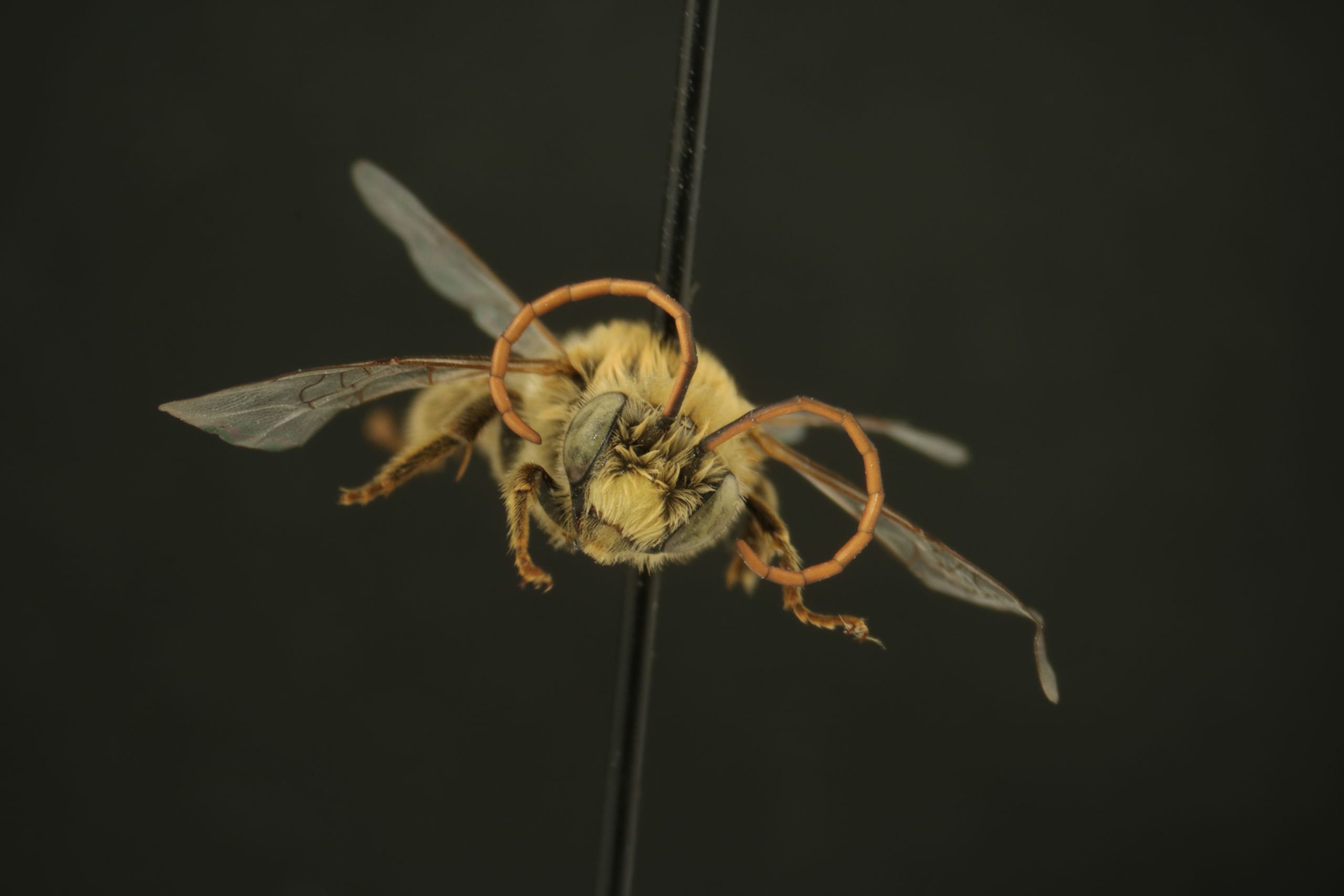Tallgrass prairie once covered vast expanses of western Minnesota, but it has been almost entirely converted to agriculture, and only fragmented patches remain, often along roadsides. Insecticide use has also dramatically increased since the early 2000s, especially the use of neonicotinoids. In addition, pollinator populations are declining worldwide, likely due to this loss in habitat quantity and quality. In our study area, student Ben Lee found that pollinator habitat decreased by 6.8 km2 from 2006 to 2014.
More research is needed to understand how pollinator communities are changing in the fragmented prairies of western Minnesota. Native bees are critical for pollinating both native plants and commercial crops, and many plants depend on specialized pollinators, and so the decline of these pollinators may threaten the long-term survival of native plant populations as well as human food systems.
Therefore, the Pollinators on Roadsides study, also known as the Yellow Pan Trap project (YPT), is measuring changes in native bee diversity and abundance from 2004-2019 and investigating how the amount of agricultural land and grassland corresponds to the nearby bee community. One hypothesis is that all bee species are declining in abundance equally. Alternatively, some bee populations may be shrinking while others take advantage of the decreased competition and become more prevalent, which would change the community composition. We hope to find out!
This study is based on the original 2004 experiment by Wagenius and Lyon, who studied the relationship between characteristics of land and the abundance and diversity of pollinators. In 2004, 2017, 2018, and 2019, Team Echinacea set out yellow pan traps at 20-40 locations along roadsides in Solem Township which were surrounded by varying amounts of agricultural land. We collected the bees that fell into the traps and stored them at the Chicago Botanic Garden where patient volunteers pinned all the specimens. Many thanks to all the people who have contributed to this project over the past 18 years!
After a hiatus due to COVID-19, the Yellow Pan Trap project (YPT) is finally back on the road! In December 2021, we completed an inventory of all 1,988 YPT bees and delivered them in 8 cases to Zach Portman at the University of Minnesota. Volunteers Mike Humphrey and Anna Stehlik previously grouped the specimens by genus, and Zach will now identify the bees to species. Mia Stevens is working on a preliminary community analysis, and Alex Carroll is tackling the GIS landscape analysis.
Working with data that has been compiled by many different people over numerous years has been both exciting and challenging. Many thanks to intern Erin Eichenberger for leaving clear documentation from 2020. There are still a few problems that need to be resolved. During inventory, we discovered 9 pairs of duplicate specimen id numbers (SPIDs) from 2017, and the specimen labels will need to be changed. In addition, some of the date and trap numbers on the specimen labels were edited in pencil, and these should be cross-checked with the existing dataset.
- Start year: 2004, rebooted in 2017
- Location: Roadsides and ditches around Solem Township, Minnesota. GPS coordinates for each trap are in a Google Map which Stuart Wagenius can share as needed.
- Overlaps with: Ground nesting bees
- Data collected: All YPT data can be found in Dropbox/ypt2004in2017.
- The most up-to-date files are in this folder: Dropbox\ypt2004in2017\yptDataAnalysis2022
- The inventory list can be found here: Dropbox\ypt2004in2017\yptDataAnalysis2022\masterYptChecklist2021Verified.csv
- Specimens collected: Eight cases containing 1,988 specimens were delivered to Zach Portman at the University of Minnesota for further identification.
- Team members involved with this project: Mia Stevens (2020-2022), Alex Carroll (2021-2022), Erin Eichenberger (2019-2020), Anna Stehlik (2020), Shea Issendorf (2019), Mike Humphrey (2018-2021), John Van Kampen (2018-2019), Kristen Manion (2017-2018), Evan Jackson (2018), Alex Hajek (2017), and Steph Pimm Lyon (2004)
- Products: Stay tuned!
You can read more information about the pollinators on roadsides project here.



Leave a Reply